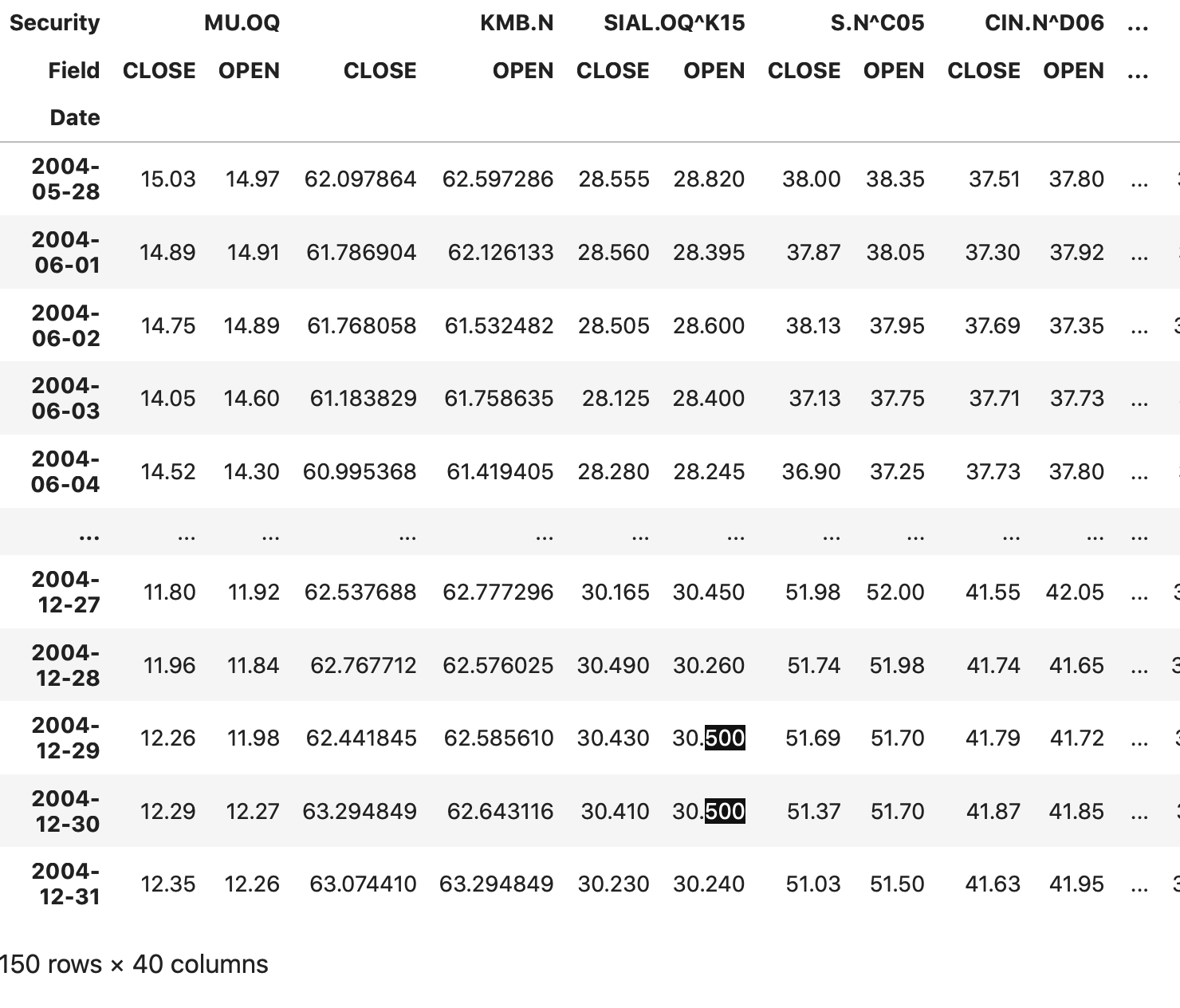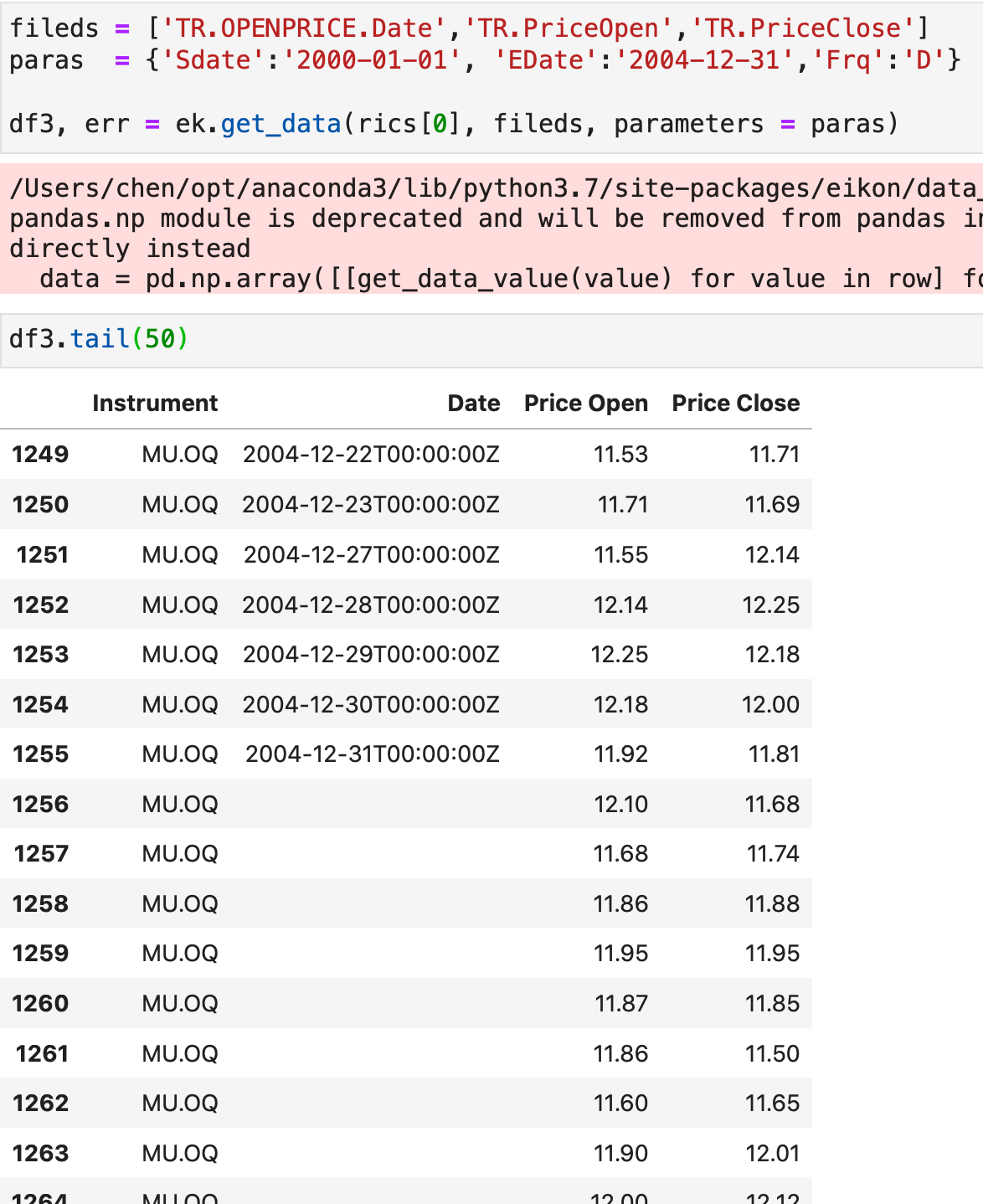hi
I am trying to get historical price of a list of RICS from 2000-01-01 to 2004-12-31.
But returned data only start from 2004-05-28.
Get_timeseries() function didn't throw any error and this happens every time when passing a list of RICS.
All the history price of all RICS in the list can be found in eikon desktop up to 2000. But even if they can't be found, shouldn't they be filled with nan?


BTW, may I ask what does 'expired' means in index joiner/leaver list. For example, JC penny is indicated as expired in s&p500 list. I cannot find any price information of this stock on eikon, but it is still publicly traded and price history can be found on yahoo finance.





